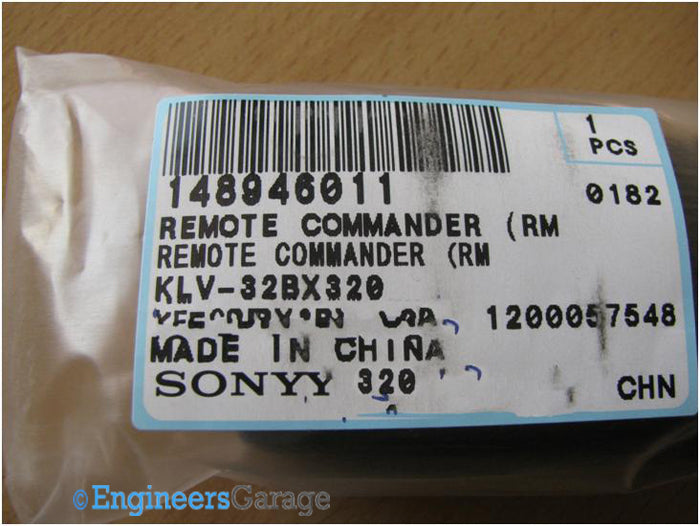The Oxford Dictionary defines a remote control as a device that can take “control of a machine or appliance from a distance by means of radio or infrared signals”.
These devices have had a huge impact on the television industry. Today, numerous devices use remote controls, from home fans and air conditioners to game consoles, garage doors, and in-vehicle entertainment systems. It is even possible to program a smartphone to use as a remote control.
While these devices are generally small, wireless, portable objects with an array of buttons that offer unique features, each remote typically performs a similar task: controlling an electronic device's outputs from a distance.
In this article, we will detail the internal components of a Sony RMGA020 LCD TV remote control used for the 32-inch KL television series. Interestingly, Sony calls the device a “Remote Command,” which is a testament to its many features.

The product label of a Sony remote control device.
This Sony remote is equipped with buttons that control various features (from volume to channel changing and more) for one of the company's LED televisions. One might think that the remote control houses complex circuitry based on the number of buttons and options available.

A typical Sony remote control.

The shape and structure of the remote control for ease of use.
The battery case and slot
Smart manufacturers design remote controls to be lightweight and have soft corners so they can be held easily. The buttons are typically made of rubber and respond to light pressure without risk of damage. The batteries are placed in an easy-to-access slot.

The remote control battery box.
Overall, the case should be comfortable for almost anyone's hands, but durable enough for everyday use without breaking easily.

The layers of the remote control body.
The Sony remote control has a screwless exoskeleton that is easy to disassemble, revealing its internal structure. The upper and lower layers of the plastic body are fixed together by mechanical fixings placed inside each of them (invisible from the outside).

The internal PCB and IC of the remote control.
The PCB and IC
Once separated, the layers reveal a rectangular printed circuit board (PCB) that covers most of the area under the hood.
The PCB is the multitasking electronics assembly beneath the remote's rubber buttons. It is attached to the bottom plastic layer using screws (not visible in the image above).

The PCB circuit arrangement.
The front part of the PCB that sits just below the rubber buttons is a mesh of connection tracks, with an integrated circuit (IC) at one end. The basic task of the IC is to decode which button was pressed and generate the corresponding signal.

The electronic arrangement of the back of the PCB.
A crystal oscillator and a capacitor can be seen on the back of the PCB, which facilitate the work of the IC. An infrared source is on the other end of the PCB (near the battery slot). The source is analogous to the remote control output, which sends the signals generated by the IC. The remote control is the transmitter and the TV is the receiver.
Essentially, the PCB acts as the brain of the remote control. It manages power requirements and takes user input (via button presses), converts it into suitable code and then transmits it.

